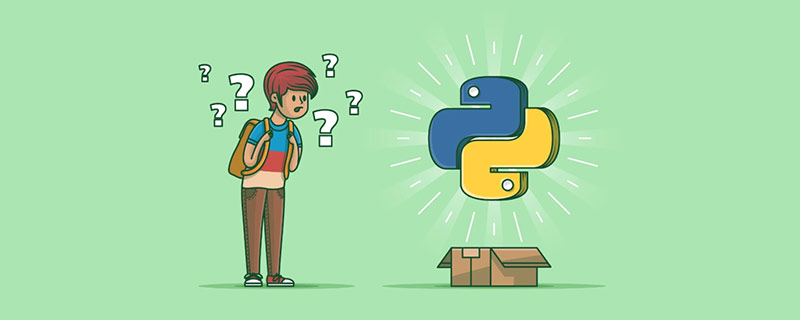所属分类:php教程

程序员必备接口测试调试工具:立即使用
Apipost = Postman + Swagger + Mock + Jmeter
Api设计、调试、文档、自动化测试工具
后端、前端、测试,同时在线协作,内容实时同步
本系列Python基础教程共四篇,本文是第二篇。
tuple和list十分相似,但是tuple是不可变的,即不能修改tuple,元组通过圆括号中用逗号分割的项定义。
优点:tuple比list速度快;对不需要修改的数据进行‘写保护’,可以是代码更安全
tuple与list可以相互转换,使用内置的函数list()和tuple()。
l = [1, 2, 3] print( l )# [1, 2, 3]t = tuple(l) print(t) # (1, 2, 3)l = list(t)print (l) #[1, 2, 3]复制代码
元组最通常的用法是用在打印语句,如下例:
name = "Runsen"age = 20print( "Name: %s; Age: %d") % (name, age)# Name: Runsen; Age: 20复制代码
函数如下:
返回元组中值为value的元素的个数
t = (1, 2, 3, 1, 2, 3)print (t.count(2) )# 2复制代码
返回列表中第一个出现的值为value的索引,如果没有,则异常 ValueError
t = (1, 2, 3, 1, 2, 3)
print( t.index(3) )# 2try: print (t.index(4))except ValueError as V:
print(V) # there is no 4 in tuple复制代码字典由键值对组成,键必须是唯一的;
eg: d = {key1:value1, key2:value2};
空字典用{}表示;字典中的键值对是没有顺序的,如果想要一个特定的顺序,那么使用前需要对它们排序;
d[key] = value,如果字典中已有key,则为其赋值为value,否则添加新的键值对key/value;
使用del d[key] 可以删除键值对;判断字典中是否有某键,可以使用in 或 not in;
d = {}
d["1"] = "one"d["2"] = "two"d["3"] = "three"del d["3"]for key, value in d.items(): print ("%s --> %s" % (key, value))#1 --> one#2 --> two复制代码dict函数如下:
删除字典中所有元素
d1 = {"1":"one", "2":"two"}
d1.clear()print (d1 )# {}复制代码返回字典的一个副本(浅复制)
d1 = {"1":"one", "2":"two"}
d2 = d1.copy()
print( d2 )#{'1': 'one', '2': 'two'}print(d1 == d2) # Trueprint(d1 is d2) # False复制代码浅复制值相同,但是对象不同,内存地址不同。
创建并返回一个新字典,以序列seq中元素做字典的键,val为字典所有键对应的初始值(默认为None)
l = [1, 2, 3]
t = (1, 2, 3)
d3 = {}.fromkeys(l)print (d3) #{1: None, 2: None, 3: None}d4 = {}.fromkeys(t, "default")
print(d4) #{1: 'default', 2: 'default', 3: 'default'}复制代码返回字典dict中键key对应值,如果字典中不存在此键,则返回default的值(default默认值为None)
d5 = {1:"one", 2:"two", 3:"three"}print (d5.get(1) )#oneprint (d5.get(5)) #Noneprint (d5.get(5, "test") )#test复制代码判断字典中是否有键key
d6 = {1:"one", 2:"two", 3:"three"}
print( d6.has_key(1) ) #Trueprint (d6.has_key(5)) #False复制代码返回一个包含字典中(键, 值)对元组的列表
d7 = {1:"one", 2:"two", 3:"three"}for item in d7.items(): print (item)#(1, 'one')#(2, 'two')#(3, 'three')for key, value in d7.items(): print ("%s -- %s" % (key, value))#1 -- one#2 -- two#3 -- three复制代码返回一个包含字典中所有键的列表
d8 = {1:"one", 2:"two", 3:"three"}for key in d8.keys(): print (key)#1#2#3复制代码返回一个包含字典中所有值的列表
d8 = {1:"one", 2:"two", 3:"three"}for value in d8.values():
print( value)#one#two#three复制代码若字典中key键存在,删除并返回dict[key],若不存在,且未给出default值,引发KeyError异常
d9 = {1:"one", 2:"two", 3:"three"}print (d9.pop(1) )#oneprint( d9) #{2: 'two', 3: 'three'}print( d9.pop(5, None)) #Nonetry:
d9.pop(5) # raise KeyErrorexcept KeyError, ke: print ( "KeyError:", ke) #KeyError:5复制代码删除任意键值对,并返回该键值对,如果字典为空,则产生异常KeyError
d10 = {1:"one", 2:"two", 3:"three"}print (d10.popitem() ) #(1, 'one')print (d10) #{2: 'two', 3: 'three'}复制代码若字典中有key,则返回vlaue值,若没有key,则加上该key,值为default,默认None
d = {1:"one", 2:"two", 3:"three"}print (d.setdefault(1)) #oneprint (d.setdefault(5)) #Noneprint( d) #{1: 'one', 2: 'two', 3: 'three', 5: None}print (d.setdefault(6, "six")) #sixprint (d) #{1: 'one', 2: 'two', 3: 'three', 5: None, 6: 'six'}复制代码把dict2的元素加入到dict中去,键字重复时会覆盖dict中的键值
d = {1:"one", 2:"two", 3:"three"}
d2 = {1:"first", 4:"forth"}
d.update(d2)print (d) #{1: 'first', 2: 'two', 3: 'three', 4: 'forth'}复制代码返回一个view对象,(key, value)pair的列表,类似于视图。优点是,如果字典发生变化,view会同步发生变化。在 迭代过程中,字典不允许改变,否则会报异常
d = {1:"one", 2:"two", 3:"three"}for key, value in d.viewitems(): print ("%s - %s" % (key, value))#1 - one#2 - two#3 - three复制代码返回一个view对象,key的列表
d = {1:"one", 2:"two", 3:"three"}for key in d.viewkeys():
print( key)#1#2#3复制代码返回一个view对象,value的列表
d = {1:"one", 2:"two", 3:"three"}for value in d.viewvalues(): print (value)#one#two#three复制代码序列类型是指容器内的元素从0开始的索引顺序访问,一次可以访问一个或者多个元素;列表、元组和字符串都是序列。 序列的三个主要特点是
索引操作符和切片操作符
numbers = ["zero", "one", "two", "three", "four"] print (numbers[1] )# oneprint (numbers[-1] )# four#print( numbers[5]) # raise IndexErrorprint (numbers[:]) # ['zero', 'one', 'two', 'three', 'four']print (numbers[3:]) # ['three', 'four']print (numbers[:2]) # ['zero', 'one']print (numbers[2:4] )# ['two', 'three']print (numbers[1:-1] )# ['one', 'two', 'three'] 复制代码
切片操作符中的第一个数(冒号之前)表示切片开始的位置,第二个数(冒号之后)表示切片到哪里结束。
如果不指定第一个数,Python就从序列首开始。如果没有指定第二个数,则Python会停止在序列尾。
注意,返回的序列从开始位置 开始 ,刚好在结束位置之前 结束。即开始位置是包含在序列切片中的,而结束位置被排斥在切片外。 可以用负数做切片。负数用在从序列尾开始计算的位置。
相关免费学习推荐:python视频教程
以上就是给小白整理的第二篇Python知识点的详细内容,更多请关注zzsucai.com其它相关文章!
